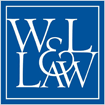
Abstract
In recent years body-worn cameras have been championed by community groups, scholars, and the courts as a potential check on police misconduct. Such has been the enthusiasm for body-worn cameras that, in a relatively short time, they have been rolled out to police departments across the country. Perhaps because of the optimism surrounding these devices there has been little consideration of the Fourth Amendment issues they pose, especially when they are coupled with facial recognition technology (FRT). There is one particular context in which police use of FRT equipped body-worn cameras is especially concerning: public protests. This Comment constitutes the first scholarly treatment of this issue. Far from a purely academic exercise, the police use of FRT equipped body-worn cameras at public protests is sure to confront the courts soon. Many police departments have, or will soon have, body-worn cameras equipped with real time FRT and a number of police departments do not prohibit their members from recording public protests. Although primarily descriptive—exploring the state of current Fourth Amendment doctrine by predicting its application to a hypothetical scenario—this Comment has a normative subtext; namely, suggesting that First Amendment values can strengthen the Fourth Amendment’s protections against the tide of technologically enhanced mass surveillance.
Recommended Citation
Julian R Murphy, Chilling: The Constitutional Implications of Body-Worn Cameras and Facial Recognition Technology at Public Protests, 75 Wash. & Lee L. Rev. Online 1 (2018), https://scholarlycommons.law.wlu.edu/wlulr-online/vol75/iss1/1
Included in
Constitutional Law Commons, First Amendment Commons, Fourth Amendment Commons, Law Enforcement and Corrections Commons, Science and Technology Law Commons
